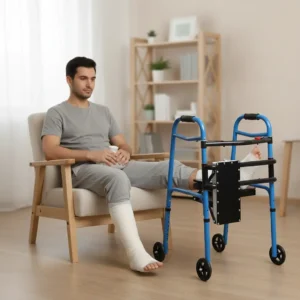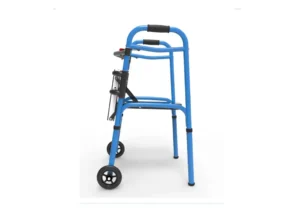In today’s fast-paced world, recovery devices have become essential tools for athletes and fitness enthusiasts alike. Whether you’re easing soreness after a workout or speeding up recovery time, knowing what features to look for can make all the difference. In this article, we’ll explore ten features that guarantee you choose a quality recovery device for your needs.
1. User-Friendly Interface
A device that is easy to operate ensures that you can focus on recovery without getting bogged down by complicated settings. Look for intuitive controls and clear displays. Ease of use can significantly impact your recovery experience. When you’re in pain, the last thing you want is to struggle with buttons and confusing manuals. An ergonomic user interface allows for quicker adjustments, enabling you to adapt your session as needed. Imagine having a device that simplifies your recovery journey, aiding rather than frustrating you.
Additionally, a visually appealing design can enhance motivation. Devices that are sleek and modern not only look good but also improve usability. Paying attention to the aesthetic can be the cherry on top of a well-designed recovery tool, helping you feel good about using it regularly.
2. Adjustable Settings
Everyone’s body is different, so a good recovery device should offer adjustable intensity levels. This feature allows you to personalize your experience for maximum relief. Just as you would adjust the temperature on your heating pad based on your current needs, having the ability to modify settings can lead to a more effective session. Some days you might require gentler support; other days, a stronger application may be necessary.
Furthermore, responsive adjustments can contribute to faster healing. Devices that respond well to user input allow for a tailored approach to recovery, which is crucial. Think about it: each injury or sore muscle group requires a unique touch. With adjustable settings, you’re not just treating the symptoms; you’re actively engaging your body in the healing process.
3. Portability
If you travel or hit the gym often, a lightweight and portable recovery device can be a game changer. Finding a device that fits easily into your bag ensures that your recovery routine is always within reach. There’s nothing quite as frustrating as being away from home and unable to access your essential recovery tools. Whether you’re commuting, heading to a sports event, or going on vacation, portability is key.
Moreover, a compact design often means it’s not only easier to carry, but it’s also less cumbersome during use. Devices that can be stowed away discreetly make a world of difference in ensuring you’re not a burden on your surroundings. Think about how often you need a quick recovery fix—weaving it into your daily life is essential. A quality recovery device that’s just as mobile as you are signifies staying proactive in your health journey.
4. Durability
Investing in a recovery device that is made from high-quality materials will ensure it lasts longer and withstands regular use, saving you money in the long run. As you consider your options, think about not just the initial cost but also the lifespan of the device. A durable device means fewer replacements and potentially better results over time.
In addition, quality construction can enhance safety. When you know a device is built to last, you can use it with confidence. Think about the peace of mind that comes with using equipment that won’t falter under pressure—especially when you are in the thick of recovery. Durability is about creating a reliable partnership in your health goals.
5. Multiple Recovery Modes
A versatile device with multiple recovery modes (like heat, vibration, or compression) can cater to your specific needs, helping to relieve various types of muscle soreness. The ability to switch between different modalities not only adds variety to your recovery routine but also addresses the diverse ways our bodies react to strain.
Consider how beneficial it is to tailor your recovery approach on any given day. Some days may warrant gentle heat therapy for that soothing comfort, while others may require the invigorating touch of vibration for thorough muscle relief. Having options enhances your ability to respond effectively to your body’s cues, making your recovery strategy both dynamic and responsive.
6. Rechargeable Battery
Look for devices with long-lasting rechargeable batteries. This ensures you can use your recovery device without the hassle of constantly replacing batteries. In a fast-paced world where time is of the essence, the last thing you want is to be caught off guard by a dead battery when you need your recovery device the most.
Additionally, many modern options come with fast-charging capabilities, lending even more convenience. Imagine getting ready for a session in just a few minutes after plugging in. A rechargeable battery not only aligns with sustainable practices but also ensures you’re always prepared for your recovery needs.
7. Manufacturer Reputation
Brands with a solid reputation usually offer reliable quality. Checking reviews and testimonials can give insight into the quality and effectiveness of the device. Hearing about others’ experiences can guide you in making a wise investment rather than a shot in the dark.
Furthermore, renowned manufacturers are often more invested in customer service. Should you encounter any difficulties, knowing that you have a company that stands behind their product can be incredibly reassuring. Solid reputation equals peace of mind, a crucial factor in your purchasing decision.
8. Safety Features
Safety should always be a priority. Ensure your recovery device includes features like automatic shut-off or temperature control to prevent overheating. When you’re in recovery mode, the last thing you want to worry about is whether your device is going to malfunction at the worst possible moment.
Moreover, safety features can significantly enhance your overall experience. Knowing that a device is designed with user safety in mind allows you to fully dedicate yourself to the recovery process. This can provide solace in knowing that every aspect of your healing journey is being attended to adequately.
9. Affordability
Quality does not have to equal high prices. Look for features that offer good value for your investment without compromising on effectiveness. It’s vital to weigh the benefits of each feature against the price tag, ensuring you’re making an investment that suits your budget while meeting your recovery needs.
Furthermore, many quality devices are now available at different price points. A straightforward comparison between different brands and products can help you discover a device that fits your financial situation without sacrificing quality. Remember, an expensive option isn’t always the best; some hidden gems at lower prices can work wonders.
10. Comprehensive Warranty
A comprehensive warranty shows that the manufacturer stands behind their product. This can provide you peace of mind when making your purchase. Knowing that you have coverage in the event of defects or issues gives you confidence in your decision.
Additionally, warranties can point to the durability of the product. If a manufacturer is willing to offer a lengthy warranty, it often means they trust their device to perform well over time. It’s a significant marker of quality—a feature that’s just as important as the physical attributes of the device itself.
Which one do you think has such features?




